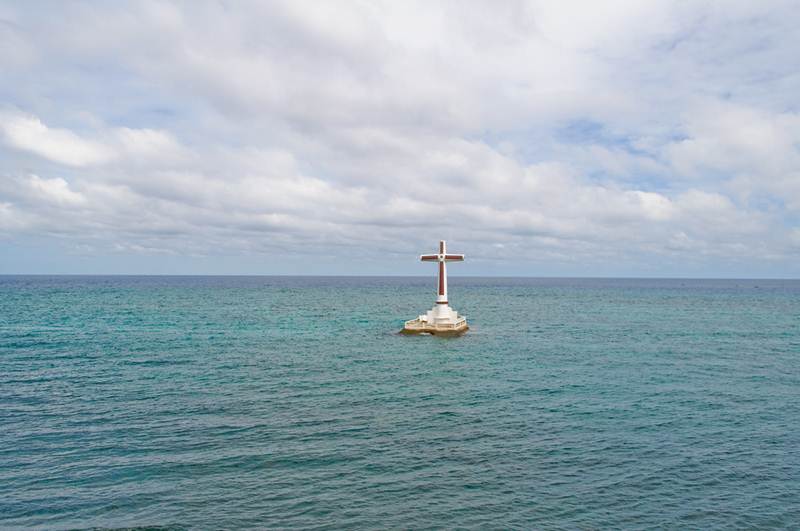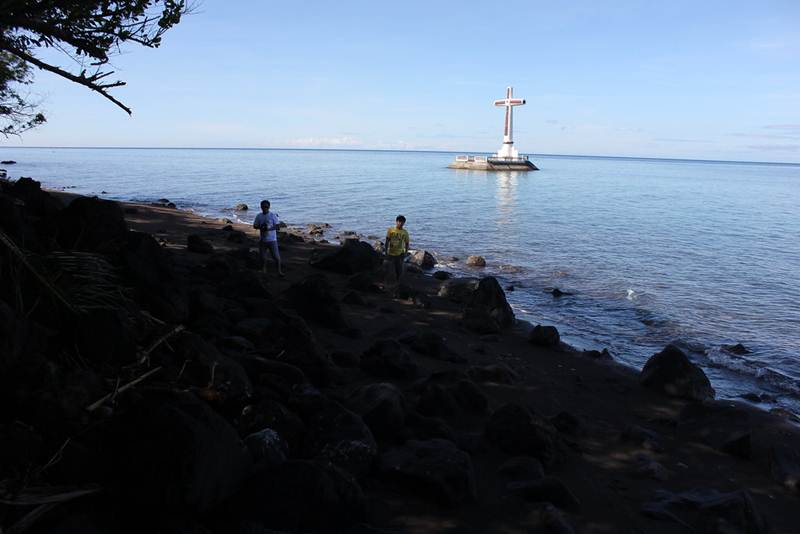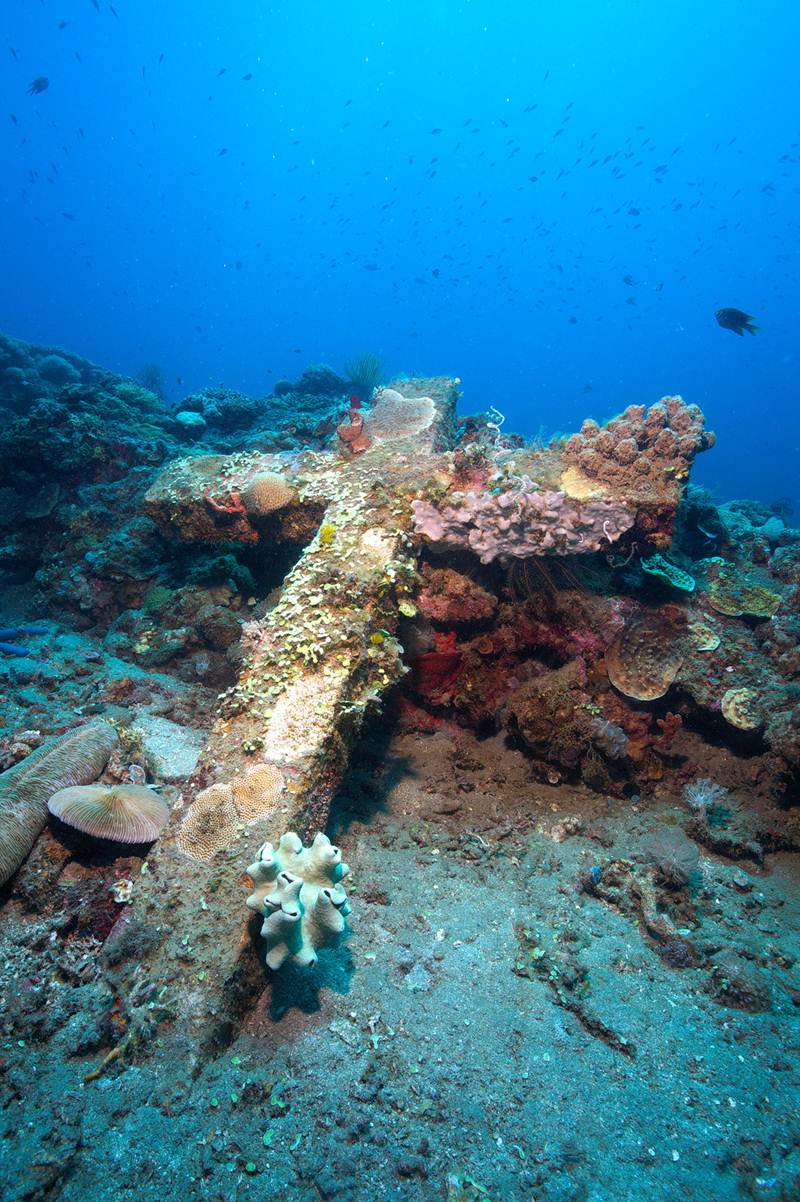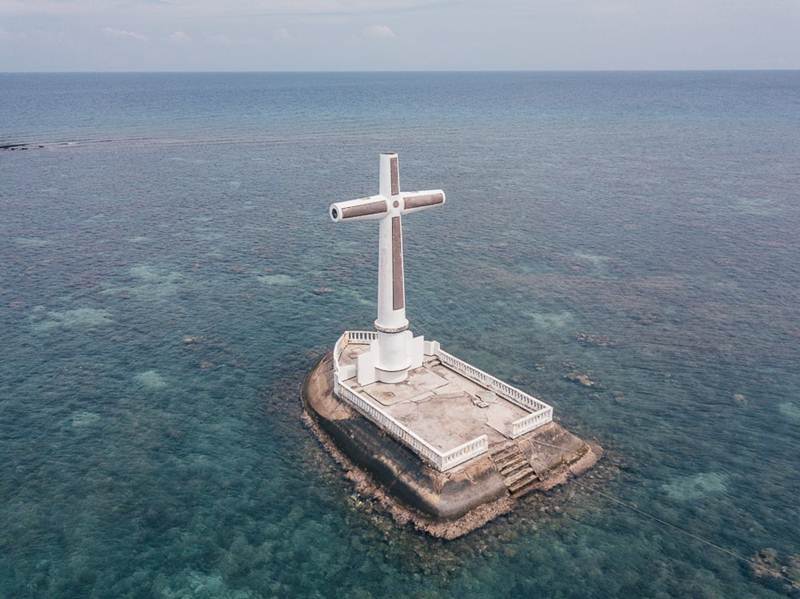Camiguin is an island province of the Philippines located in the Bohol Sea, about 10 km off the northern coast of the island of Mindanao. Camiguin Island is of volcanic origin, consisting of 4 young volcanoes containing layers of lava and dust located above the structure of the old volcano. In particular, two volcanoes Vulcan and Hibok - Hibok, are still active and had the last eruption in 1953.
Camiguin Sunken Cemetery
Sunken Cemetery is today one of the most visited tourist attractions on Camiguin Island and one of the unique diving sites in the world. During the eruption of the Vulcan volcano that lasted from 1871 to about 1875, then lava was continuously sprayed into the sea and reached a height of nearly 610 m and in addition earthquakes occurred that destroyed the entire area. Camiguin island area was founded during the Spanish period, the entire old town of Catarman and the cemetery were submerged in the sea.
Camiguin island sunken cemetery
Remnants of the cemetery's structures and headstones were still visible at low tide, until 1948 when Mount Vulcan erupted for the fourth time, when the burial site was more than 7 meters deep. In 1982, a large cross was erected on the solid lava layer to mark this old cemetery.
The image of the cross became a favorite subject of photographers and it is a highlight for the incredible photos of sunsets and sunrises on Camiguin Island.
[First Image Source / Flickr]
 |
Camiguin Island Image Source / FaceBook |
 |
Cemetery Island Image Source / Jjonnymelon |
 |
Sunken Cemetery Image Source / Jonnymelon |
 |
Sunken cemetery Camiguin Image Source / Flickr |
 |
Camiguin island Philippines Image Source / Flickr |
 |
Sunken Cemetery near Camiguin Island Image Source / Flickr |
 |
Camiguin island in Mindanao Image Source / Flickr |
 |
Camiguin island sunken Cemetery Image Source / Flickr |
 |
White island Camiguin Image Source / Commons.wikimedia |
The Sunken Cemetery, Philippines | Video
Sunken cemetery Camiguin | Map


No comments:
Post a Comment